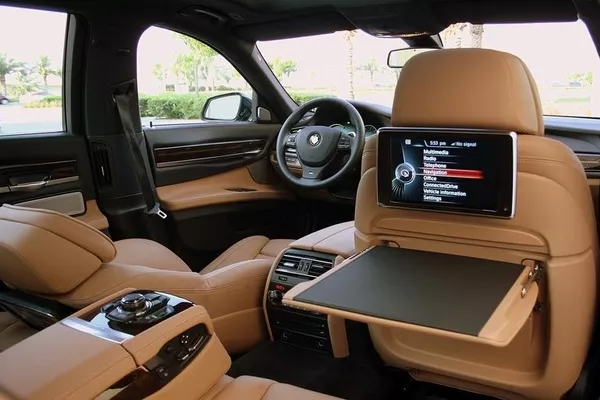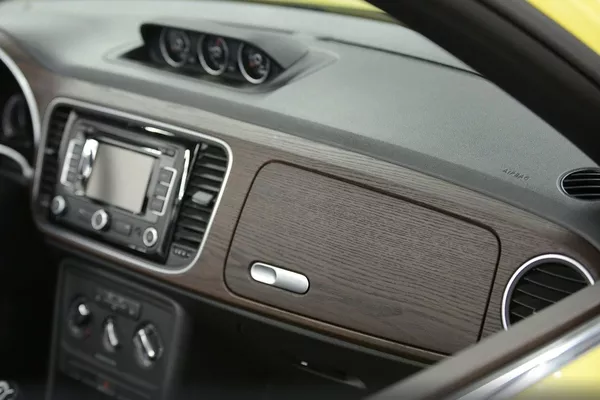One of the reasons people buy a car, apart from being able to get from one point to another, is to get away from too much pollution that commuters experience when riding public transport.
A jeepney or bus without air-conditioning more readily exposes you to smoke - especially if the traffic is heavy. By buying your own four-wheeled vehicle, you can comfortably sit in your car and turn on the AC when you need to. You’re safe from the hot weather as well as the sometimes tremendous amount of air pollution outside.
However, what if you were to find out that your vehicle interior becomes toxic in the summer? Would you still lock all the windows and turn on the AC, and disregard this supposed news? Would you rather know more about it and how you can save yourself from the supposed “toxicity” in the summer months? Read all about it in this article from Philkotse.com.
1. What does it mean to have a toxic vehicle interior?
This basically means that some of the components of the car interior, if not all, are made of toxic materials. These materials can be made of elements dangerous to the health of both people and pets. Depending on the toxic material or compound, it can affect the passengers when inhaled or ingested.

Toxic car interiors mean that some of the components of the interior, if not all, are made of unsafe materials
We’ve researched for statements from experts and scientists, and it turns out that vehicle interiors are actually toxic regardless of the time of the year. These experts also specifically noted that the interior is more toxic at two particular times – that’s in summer, and when the car is brand new.
2. When does your car interior get more toxic?
When it is Brand-new
It’s quite reasonable for a new vehicle to still be toxic especially when it comes fresh from the manufacturing plant and the interior will most likely remain untouched. That “brand-new car smell” primarily comes from the seats, the dashboard, the carpet and other parts that may contain harmful chemicals.
After using the car for a few months, you may slowly notice the smell getting fainter until it eventually disappears. This is because whenever you sit on the seats or touch and clean the dashboard, a particular amount of the toxic material is removed. Still, you only remove what’s on the surface, and more of these toxins are actually in the interior parts.

That “brand-new car smell” is actually the smell of chemicals
>>> Must read: Tips & Tricks to get rid of bad smell in your car
Summer melt
Summer is the time when everything heats up and, in some cases, starts melting. In a way, the same happens to your vehicle interior. Whether you turned on your AC or not, the heat outside will cause the toxic fumes coming from the interior components and make it worse and stronger.
Sadly, exposure to intense heat accelerates the “off-gassing” event. The same process happens when the interior is exposed to the sun’s ultraviolet rays.

Exposure to intense heat accelerates an “off-gassing event.”
>>> Also check out: 3 must-know tips to cool down your car as quickly as possible in the summer
3. What’s toxic in your car?
Naming the tons of different chemicals used to make the interior of your vehicle would be pointless. Even though they are toxic and can cause the passengers' illness, these known toxic chemicals actually play important parts that’s why manufacturers use them in the first place. Here are some examples just to name a few of the dangerous chemicals in your interior.
- Vinyl – this is a cheap plastic-like material that comprises most of the materials you can see in your interior.
- Formaldehyde – This is a type of preservative that’s dissolved into the main materials that make up your vehicle's interior.
- Flame retardants – These are added to protect the driver and passengers from the heat from the vehicle’s engine bay and its exhaust.
- Heavy metals and plastic -- These are found in the different parts of your interior like the dashboard, the armrests, and the door handles.

Vinyl is a cheap plastic-like material that comprises most of the materials you can see in your interior
>>> Worth to note 6 Ways to Maintain Your Car Interior’s Cleanliness.
4. What happens if you inhale too many toxic fumes?
Although there are only rare cases of vehicle occupants experiencing severe side effects of interior toxic fumes, it’s still best for you to recognize the symptoms that you need to get away from your car for a while. Here are some of the symptoms that you’ve inhaled too many toxic fumes.
- Nausea
- Headache
- Vomiting
Although these are just the mild symptoms, prolonged exposure and inhalation of these toxic fumes can cause more serious ailments like the ones below:
- Ailments concerning the nervous system
- Memory loss
- Cancer
- Hormonal changes
>>> Related post: Common health issues of drivers and the effect on their driving ability
5. What can you do?
Although automobile manufacturers continue to do their best in ensuring the safety of the materials they use for their vehicles, it seems that there still isn’t a way to get rid of these toxins for good. However, you can follow our tips below to minimize (if not fully eliminate) the chances of having your family members and passengers inhale these toxic fumes.
- Whether your vehicle is new or it’s summertime, remember to keep it well-ventilated. This will make sure that the toxic fumes escape the cabin rather than stay in it and welcome you once you get in your car.
- If your vehicle is new, ride it around town with the windows down so the chemical build-up and fumes escape instead rather than circulate in the cabin.
- In summer, roll your windows down a little bit so air can freely escape. Also, if your budget allows it, consider buying car gadgets for summer such as a UV resistant sunshield that you can put against the windows so sunlight doesn’t heat your vehicle too much. This way, the seats, dashboard, and the rest of your interior are protected from the harsh effects of the sun.

If your vehicle is new, ride it around town with the windows down
Recent posts
- Car maintenance: 4 steps to remove interior scuff marks Aug 17, 2022
- 3 DIY tips to deal with moldy smells inside the car vents Aug 09, 2022
- Steps to remove grease and oil from car interior Aug 16, 2022
- Must-have equipment to keep your car interior clean & organized Oct 13, 2020
- Helpful checklist for car interior cleaning Apr 09, 2020












